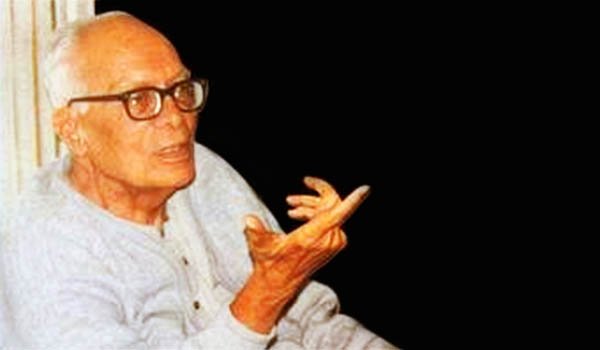Nearly one million urban residents benefited directly from low-cost, community-built services in projects inspired by one practitioner’s methods — a startling result that shows how small investments can yield large social returns.
Akhter Hameed Khan was a pioneering social scientist whose fieldwork and institutions reshaped development practice across South Asia in the 20th century. His early career combined study at Cambridge with practical leadership at Comilla, where the Comilla Model tested cooperative ideas in rural development.
Later, akhtar hameed khan led the Orangi Pilot Project in Karachi, showing how low-cost, people-led infrastructure can transform neighborhoods. His life and work bridged government, academia, and grassroots groups, earning national and international honors.
This guide offers a clear, chronological look at his formative ideas, signature initiatives, and lasting influence on policy and practice. Readers in the United States working in urban planning, public policy, and development will find practical lessons on savings discipline, local training, and civic co-production from a man who moved from top-down systems to people-first approaches.
Key Takeaways
- Comilla and Orangi show two tested paths: cooperatives and people-financed infrastructure.
- Practical partnerships with government amplified local action and scaled impacts.
- Savings discipline and local training were core to project sustainability.
- His methods remain relevant for microfinance and municipal service delivery.
- The guide connects design choices to measurable outcomes for practitioners and students.
Akhter Hameed Khan
He built practical systems that let communities finance, manage, and maintain their own development projects.
Why his name matters in rural development, microcredit, and participatory governance
His key contribution was operationalizing local institutions. He combined enforced savings, group credit, and regular training so villagers could run cooperatives and small infrastructure projects. These methods shifted power from central planners to local people and improved long-term ownership.
Quick facts: Birth, nationality, fields, and landmark projects
Born in Agra on 15 July 1914, akhter hameed khan became a Pakistani‑Bangladeshi social scientist whose life spanned academic and field leadership. He served as Principal of Victoria College and as founding director of the comilla academy in 1959.
He led the Comilla Model in east pakistan and later launched the Orangi pilot project in Karachi. Partners included Michigan State (state university), Harvard, the Ford Foundation, and government pakistan programs. He won the Ramon Magsaysay Award in 1963 for linking training, participation, and industrial development goals to local action.
Early Life and Education: From Agra to Cambridge
Early years in Agra placed him between literary salons and reformist debates, seeding a career focused on social change. His family home introduced poetry and Sufi ideas that shaped moral purpose. His education began with a BA from Meerut College in 1932 and an MA from Agra University in 1934.
Family roots and formative influences
His mother taught him the verses of Hali, Iqbal, and Azad. Her early death from tuberculosis in 1932 left a lasting mark. That loss later informed his concern for women’s health and local empowerment.
From Agra University to Magdalene College
After lecturing at Meerut College he joined the Indian Civil Service in 1936 and trained at Magdalene College, Cambridge. Time in England broadened his knowledge of governance and public administration. Friendship with Choudhary Rahmat Ali sharpened political awareness.
These years created a man of letters and action. Academic study in literature, history, and philosophy fed practical training skills. Seeds planted in Agra would surface later at Victoria College and the Comilla Academy, shaping village-focused solutions to social problems.
From Civil Service to Social Scientist: A Values-Driven Pivot
Direct exposure to wartime shortages and administrative limits transformed a career in government into a life of service. As a revenue collector in the indian civil service, he saw rural deprivation and felt the limits of official responses during the 1943 Bengal famine.

Resignation and a new moral direction
In 1945 he resigned, saying he would not live “in the trap” of bureaucracy. That decision followed the famine and frustration with rigid procedures that failed to address urgent local problems.
Sufism, austerity, and learning by doing
He briefly joined the Khaksar Movement, then turned to Sufism, embracing humility to curb greed and fear. With his wife he worked as a locksmith and day laborer near Aligarh to learn poverty’s everyday burdens.
Those years of austerity shaped his approach. Living with laborers taught him about indebtedness, household hardship, and the agency needed for lasting change. He later returned to teaching at Jamia Millia, migrated to Pakistan in 1950, and became Principal at Comilla Victoria College.
The pivot was not anti-government but aimed to make government enable local initiative. This ethical foundation—enforced savings, transparent governance, and local leadership development—would inform the Comilla Model and his later work as a social scientist.
The Comilla Model: Academy-Led Rural Development in East Pakistan
The Comilla Model translated classroom ideas into a living laboratory of rural development at the thana level. After leading Victoria College, akhter hameed khan founded the Pakistan Academy for Rural Development on May 27, 1959.
Design pillars combined two-tier cooperatives, enforced savings, training centers, and small-scale irrigation. Road, drainage, and embankment works gave immediate livelihood relief and helped villagers invest in pumps and dairies.
Partnerships and services
Comilla secured Ford Foundation grants and technical advice from Michigan State University and Harvard. The Central Cooperative Association offered banking/credit, machinery repair, and weekly training for organizers and model farmers.
Outcomes and lessons
Within three years the program formed 130+ primary societies with about 5,000 members, signaling early traction. Later cooperative failures (by 1979) exposed governance limits and elite capture.
Those lessons shaped later microfinance thinking and inspired figures such as Yunus and Abed. The model widened to health and family planning and earned a Ramon Magsaysay Award for its practical development approach.
Orangi Pilot Project: Community-Led Urban Solutions in Karachi
In the crowded lanes of Orangi, a grassroots pilot project rewrote urban service delivery by asking residents to lead. Launched in 1980, the effort tackled huge gaps in sanitation across an area of more than 32 square kilometers and about one million people.
Context: katchi abadi realities and people-financed systems
Orangi’s density left municipal agencies overwhelmed. Formal government services were scarce, so households and lane committees invested cash and labor to build low-cost sewers.
Hundreds of kilometers of drains were installed and, by 1993, over 72,000 houses were connected through this approach.
Programs beyond sewers
OPP expanded into housing support, primary health and family planning outreach, community schooling, and supervised credit for small enterprises. These programs raised local skills and cut costs by using standardized, low-cost designs.
Scaling impact and civic partnerships
OPP acted as adviser and documenter rather than a formal authority. Lessons from this work guided the Lodhran pilot project in 1999, a collaboration with a municipal committee to extend town-wide services.
The model showcased how participation, local custodianship, and technical simplicity can make development durable—despite criticism and legal challenges faced by hameed khan during the work.
Advisory Roles and Global Engagements
He moved between universities and field sites, translating practical lessons into teaching and policy advice. His appointments connected local projects to international research and training programs.

Universities and institutes
He served as research fellow at the University of Agriculture, Faisalabad, and directed a rural economics project at Karachi University. From 1973 to 1979 he was a visiting professor at michigan state university, and he also taught briefly at Lund, Harvard, and Oxford.
Consulting and fieldwork
As a World Bank consultant in 1974 he surveyed rural development in Java, adding comparative insights to his work in east pakistan. He advised Bogra Rural Development Academy and Peshawar Academy on the Daudzai Integrated Rural Development programme.
Practical impact: curricula at training academies were updated with lessons from Comilla and Orangi. His university posts emphasized applied research and helped governments and practitioners improve planning and service delivery across varied areas.
By combining classroom exchange at michigan state with field advising, akhter hameed khan shaped development practice and strengthened practitioner capacity worldwide.
Awards, Honors, and Publications
Formal recognition and a steady body of writing made his field methods accessible to universities, trainers, and municipal officials. Honors tracked project impact and helped spread ideas across development networks in later years.
Major recognitions
Signature awards include the Sitara-e-Pakistan (1961) and the Ramon Magsaysay Award for Government Service (1963). He received an honorary Doctor of Laws from Michigan State in 1964. Posthumous honors include the Nishan-e-Imtiaz (2001) and the Jinnah Award (2004).
Selected works and themes
Key English texts—Orangi Pilot Project: Reminiscences and Reflections (1996) and Rural Development in Pakistan (1985)—are standard reading in development courses. Shorter papers and speeches on savings, training, and institutional design guided state university curricula and on-the-ground practice.
Writings in Urdu, including Chiragh aur Kanwal (1988), and health pieces such as the UNICEF essay “The sanitation gap” (1997), connect infrastructure to mortality and public health policy.
For U.S. readers: these awards and publications show a life where measurable results and clear methods reinforced each other, offering practical references for training, municipal planning, and development practice.
Legacy and Ongoing Influence
Today his name marks both a research archive and active field experiments that keep his lessons alive.
Institutional memory and inspiration
The Akhter Hameed Khan Resource Center began in 2010 as an archive of writings by him and Shoaib Sultan Khan. It later became an NGO with an urban development site in Dhok Hassu, extending archive material into practice.
Comilla’s mixed results taught careful lessons. Failures in some cooperatives led BRAC and Grameen to favor centralized control and tight client targeting in microcredit. Still, both groups credit inspiration from his leadership and methods.
OPP’s pilot project logic now informs municipal work. Lodhran shows how city partnerships scale people‑built services beyond single settlements into town-wide systems.
Health, women’s empowerment, enforced savings, and local stewardship remain active design features. Pakistan formally honored him by renaming its national training center, embedding his approach in government pakistan learning.
For practitioners: adapt enforced savings, simple technical designs, and community governance when structuring credit, training, and service co-production with villagers and urban residents.
Conclusion
A life spent crossing official and local worlds produced methods that made small investments deliver steady social returns.
Akhter Hameed Khan combined roles in academia, government-linked academies, and NGOs to shape modern rural development and urban practice. His work shows how disciplined savings, practical training, and simple, incremental infrastructure let people solve local problems.
His dual legacy is clear: institutional innovation at Comilla and community‑built service systems at Orangi. Critics note cooperative failures, but those lessons fed later improvements in governance and program design.
For U.S. planners and development professionals, his approach offers a tested path: align government service with community initiative, use cost-sharing, and publish practical guides so families and villages can sustain gains.
Read his books and apply the approach across sectors. The true measure of his years of service is the empowered communities that continue to expand their own solutions.
FAQ
Who was Akhter Hameed Khan and why is he important in rural development?
Akhter Hameed Khan was a Pakistani social scientist and development practitioner known for designing practical, community-driven programs. His work—especially the Comilla Model and the Orangi Pilot Project—shaped approaches to participatory governance, microcredit, cooperative societies, and community sanitation. He combined field experimentation with training and institutional design to improve livelihoods in villages and informal urban settlements.
What is the Comilla Model and what were its core features?
The Comilla Model was an academy-led rural development program started in East Pakistan that emphasized cooperative societies, enforced savings, local training, and simple infrastructure projects. It linked the Pakistan/Bangladesh Academy for Rural Development with field action, promoted credit and extension services, and sought to build village institutions for planning and maintenance.
How did the Orangi Pilot Project differ from the Comilla Model?
The Orangi Pilot Project focused on urban informal settlements in Karachi, using community-financed sanitation to address public health gaps. Unlike Comilla’s rural cooperatives, Orangi prioritized low-cost technical solutions, resident participation in construction and maintenance, and parallel programs in housing, health, family planning, education, and supervised microcredit.
What role did international partners like Michigan State University and the Ford Foundation play?
Universities and foundations contributed technical assistance, training, and funding. Michigan State University and Harvard engaged in research and capacity building, while the Ford Foundation and USAID supported pilot projects and institutional development. These partnerships helped scale training, field surveys, and evaluation of pilot approaches.
What were the main outcomes and challenges of the Comilla cooperative approach?
The Comilla Model achieved notable increases in local savings, infrastructure, and farmer organization, and trained many field staff. However, cooperative failures, governance lapses, and political shifts limited long-term replication. Lessons included the need for strong local leadership, adaptive training, and realistic financial models for microfinance and credit.
How did his background in the Indian Civil Service influence his work?
Service in the Indian Civil Service and exposure to crises such as the Bengal famine shaped his commitment to practical solutions and moral responsibility. He left formal service to pursue development work informed by administrative experience, a values-driven outlook, and later influences from Sufism and grassroots participation.
What training and education prepared him for his development career?
He studied at institutions including Agra University and Magdalene College, Cambridge, gaining an interdisciplinary grounding in administration, economics, and social thought. Later affiliations with universities such as Michigan State and visits to Harvard and Oxford enriched his research and teaching roles.
Which awards and recognitions did he receive?
He received major honors such as the Ramon Magsaysay Award and national awards including Nishan-e-Imtiaz and Sitara-e-Pakistan for his contributions to development practice and public service. These recognitions acknowledged both field impact and policy influence.
How did his projects address women’s health, family planning, and education?
Both Comilla and Orangi included targeted programs for maternal and child health, family planning outreach, and community-based education. Projects emphasized training of local health workers, female participation in cooperatives and savings groups, and linking services to community-led infrastructure improvements.
What is the lasting legacy of his approaches for contemporary development?
His legacy persists in community-driven sanitation, microfinance lessons, and institutional training models. Organizations such as BRAC and Grameen drew on similar principles of local participation and appropriate technology. Resource centers and academic programs continue to study and adapt his methods for modern challenges.
Where can researchers find his publications and case studies?
His monographs, project reports, and reflections on Orangi and Comilla appear in development journals, institutional archives, and university libraries. Many case studies are available through development institutes, university presses, and online repositories documenting projects, training manuals, and evaluation reports.
Can the Comilla and Orangi approaches be replicated in other regions today?
Elements can be adapted, but replication requires careful attention to local governance, finance models, and community capacity. Successful adaptation needs political support, ongoing training, transparent management of cooperatives or credit systems, and flexible technology suited to local conditions.





